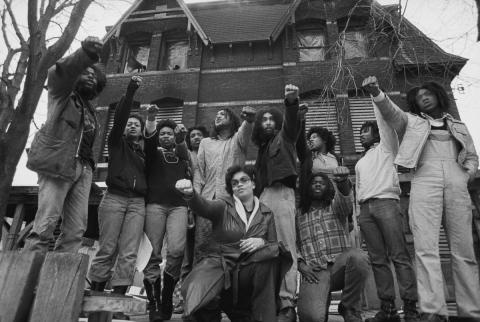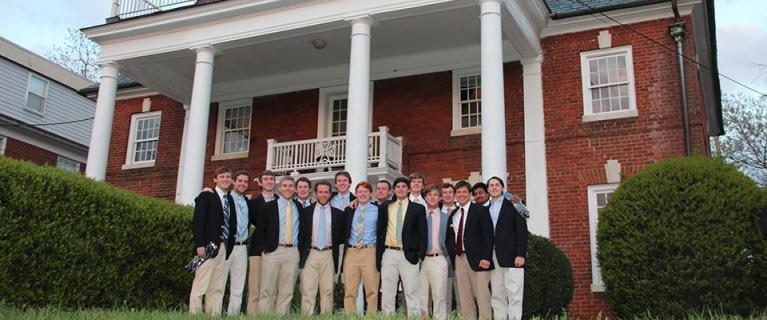October 18, 2016 - 23:49

Over fall break, I watched two documentaries that turned out to be closely connected in many ways to the thinking I’m doing for my independent study.
The first film was Let The Fire Burn—a 2013 documentary about the police bombing of the Philadelphia-based radical black organization, MOVE. I had only heard about the bombing once before a year ago when I came across the NPR article, “We Have So Many People Never Heard of the MOVE Bombing?”
http://www.npr.org/sections/codeswitch/2015/05/18/407665820/why-did-we-forget-the-move-bombing
After first learning about the attack through this brief essay, though, it fell off my radar. Watching the documentary brought this horrific history back into my mind with a visceral, insistent force. The terrorization of the MOVE organization occurred only a few minutes away from Haverford College. The racialized, militarized policing inherent in this attack is deeply embedded in the city I now live near and identify with. Realizing this made these events feel closer to home and awakened in me a keen sense of accountability to understand exactly what MOVE was and what happened to them.
Indeed, as evocative as the documentary was, I found its portrayal of MOVE very one-sided. The voices and opinions of former MOVE members were heard only in the format of official court testimonies, meaning that the viewer’s perceptions of MOVE were limited by the framework of this legal forum. The documentary did not leave space for anyone associated with MOVE (such as Ramona Africa, the only adult who survived the attack) to speak about the organization on their own terms. I want to know, then, what MOVE was actually about—what principles they stood for and what work they were doing. The impression left by the documentary is that MOVE members were aggressive and strange. Interviews with their neighbors made it appear that they were nuisances disliked by the surrounding community. To what extent was this actually the case? I want to know: What were the teachings of John Africa, the movement’s founder? And what were MOVE’s politics—what ideological commitments inspired their unique back-to-nature lifestyle, their odd-looking home, and their passionate public speeches?
Implications of the Attack on MOVE
“The political implications of MOVE were seen as more provincial and self-contained. And unsurprisingly, local politicians were all too eager to move on and leave those implications behind.”—Gene Demby, NPR
http://www.npr.org/sections/codeswitch/2015/05/18/407665820/why-did-we-forget-the-move-bombing
In stark contrast to the perspective outlined by Demby in the quote above, I see the MOVE bombing as an event worth studying not only for its inherent historical significance, but also for its far-reaching political implications. Below I make a few connections between the MOVE bombing and the themes of my independent study.
The symbolic power of housing
One of the most stunning and egregious aspects of the MOVE bombing was that the Philadelphia police responsible for the attack not only bombed the house where the MOVE organization was living, but eventually allowed the fire to spread and burn down an entire block of West Philadelphia homes. Indeed, this is the meaning behind the film’s title: The police and fire crews decided to Let. The. Fire. Burn. The very idea that this was allowed to happen—that an entire street of homes was destroyed in the course of a few hours and no one faced legal culpability—is mind boggling. It says something important about how the people in this predominantly black community were viewed by authorities. To the cops and the Philly leadership, these people were dispensable, their homes and lives disposable if it meant taking a stand against MOVE and the radical black politics that they represented.
The destruction of 62nd and Osage Avenue, although exceptional for its drama and for the murders that it entailed, was not an isolated incident. Watching the documentary with my independent study in mind, I began to think about how the leveling of this community can be connected to a deeply entrenched pattern of black housing destruction enacted without consequence by white power structures. It reminds me of my own hometown of Charlottesville, where the thriving black community of Vinegar Hill was torn to shreds in the 1960s by the local government’s “Urban Renewal” project. In so many of these incidents, the story is the same: A thriving black neighborhood is destroyed with impunity by those in power, who insist that what they are doing is reasonable, even charitable. The event is then promptly forgotten and erased from institutional memory. No one is held responsible, and the black community is left to pick up the pieces.
These events, this rampant destruction of black housing, represents a tangible, life-changing loss for those affected. On a symbolic level, it highlights the way in which white supremacy has wormed its way into systems of housing. Who gets to have nice, well-cared for homes, who gets stuck in under-funded subsidized housing, and whose homes are destroyed? The answers to these questions fall again and again along racial lines.
The politics of public space

MOVE’s radicalism translated into an occupation of space that put their powerful blackness on display. There home itself was an assertion of presence—boarded up, with a loud speaker projecting the voices of MOVE members so the whole street could hear. Even though they were on their own property and their behavior/practices/beliefs needn’t really have been of much concern to anyone else (outside of possible noise complaints when they started using the loud speaker), everything MOVE did was read as a danger, an assault on the public peace. This is what happens when peace in public spaces (like neighborhoods) is constructed within a white supremacist context. Any time people of color unapologetically embrace their visibility and live in a space with passion and purpose, it is seen as a threat.

Who gets to take up public space and how they get to do it is a racialized reality. To be white is to have the latitude to take up public space in aggressive, unwelcomed ways and still get away with it.
The behavior of UVA frat members in Charlottesville is a perfect example. The (predominantly white) men who party in these homes are often aggressive, boisterous, even dangerous. Yet, the opprobrium them receive for this behavior is exponentially different from the heavily policed, militarized responses that people of color face whenever they occupy public space.
My goal for the independent study is to connect this conversation about the policing of public space to homelessness. How do homeless people and panhandlers experience public space? Do they have a right to public space, and how is this right infringed upon? How do they defend their right? I am especially interested in exploring the initiatives that cities (like my own town of Charlottesville) are currently developing to curtain panhandling and to control more tightly who gets to be seen in the public sphere. I also want to tie in a disability studies perspective here, and I am curious to see how disability activist Riva Lehrer's new exhibition at Haverford College, "Consent to Be Seen," will expand my thinking about the politics of visibility.
**************
The second documentary was a 2012 film called Mumia: Long Distance Revolutionary. It traces the life of Mumia Abu-Jamal—a black panther, journalist, and current inmate at SCI Mahanoy in Pennsylvania. Mumia is a fascinating person. He worked in Philly as a radical black journalist and became well-respected for his work in radio. His distinctive, resonant voice is captivating. As it happens, one of the stories that Mumia followed most closely during his career was the plight of the MOVE organization and the emerging conflict between MOVE and the Philly government. As the documentary explains, his take on the story was unique because he offered a more sypathetic perspective on MOVE that pushed back on the overwhelmingly negative impression cultivated by mainstream media. However, Mumia’s journalism career was cut short when he was convicted for the 1981 murder of a Philly police officer. It is widely believed that Mumia was not responsible for the murder. Instead, his guilt was constructed after the fact. The authorities needed to silence him--a provocative and powerful black figure, Mumia was being watched by government officials even when just a teenager.
“10 Facts About Mumia Abu-Jamal’s Case,” The Feminist Wire
http://www.thefeministwire.com/2014/01/10-facts-about-the-mumia-abu-jamal-case/
There are many, many things that can be said about Mumia’s life story—about the work he has done and continues to do. Incredibly, Mumia has written multiple books while incarcerated. He also continues to participate in speaking events and works with educators by talking to their classes over the phone. Some of his recorded commentaries have been compiled by the organization Prison Radio.
http://www.prisonradio.org/media/audio/mumia
Thinking specifically about how Mumia’s story and insights relate to my independent study, one of the key points about Mumia that I honed in on is his ability maintain—even strengthen— his political radicalism and activist presence from within an institution specifically designed to root out resistance and critical questioning. This is something I want to keep thinking about in my independent study: How do people organize and foster resistance from within unlikely, oppressive spaces? Thinking specifically about homelessness, I am interested in learning about activist work done by the homeless and very poor. What does it look like when people experiencing such dire circumstances translate their pain and hardship into a fight for change?
This post covers a lot of ground and touches briefly on so many threads that could be explored in far greater depth. The breadth of the post reflects the interconnected and expansive themes that I am thinking about for my independent study. As the course continues, one project that I want to keep working on is my research on the history of the Haverford College Apartments. After learning about MOVE, a theme that is now taking shape for me in relation to this research is the stories of inequality embodied by housing and homes. There are stories that live is in the Haverford College Apartments, and there are stories that live in the apartments on 62nd and Osage Avenue. It is these stories that I want to uncover and understand.
